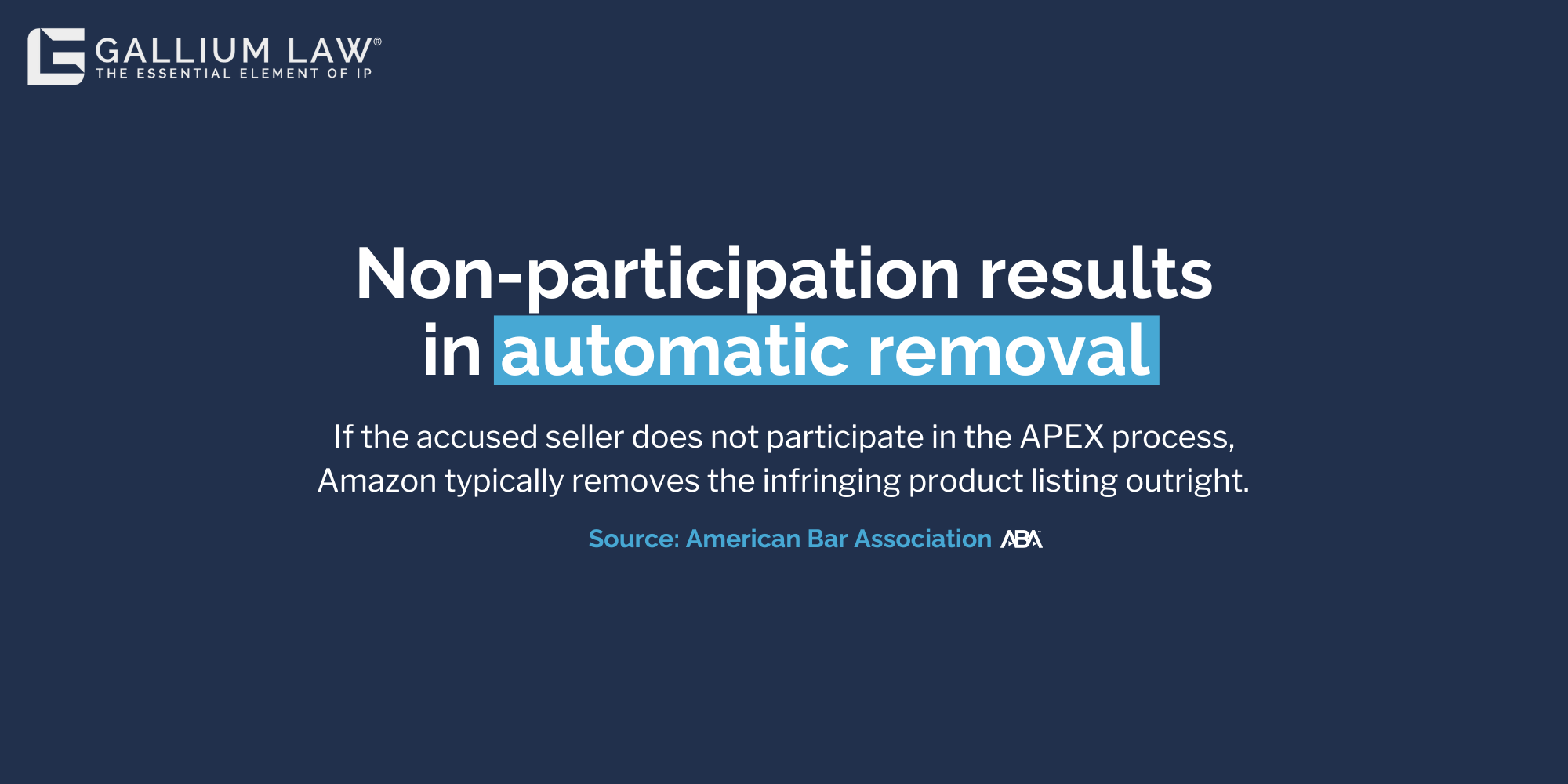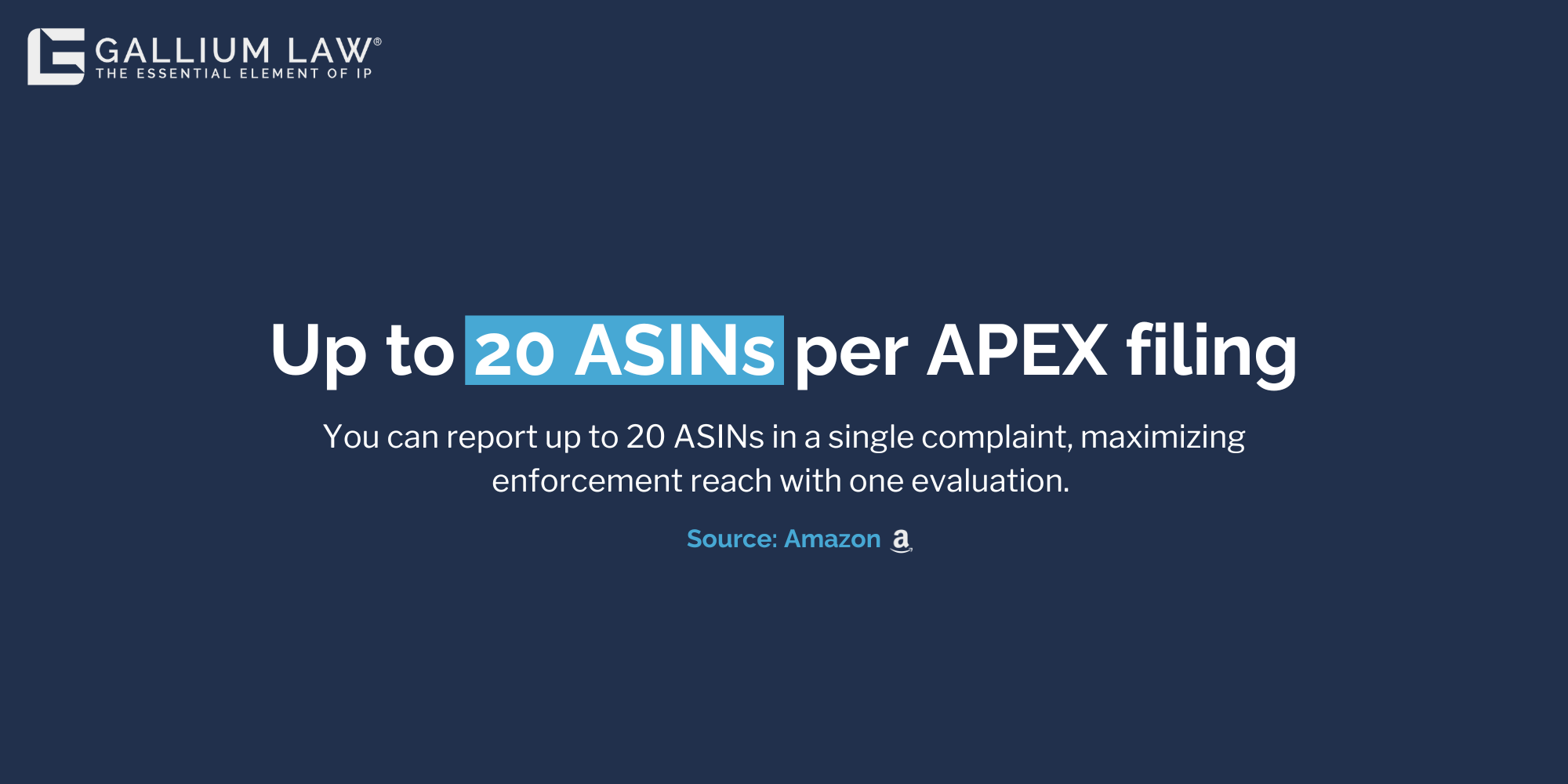Table of Contents

Connor Hance
August 2025

Anna Wengreen
August 2025

Nelson Lim
August 2025

Mike Lee
May 2025

Shawn
May 2025

Robert Paul
August 2024

Ryan Balko
September 2024

Daniel Bakke
August 2024

Gideon Eden
July 2023

David Morse
March 2024

Brady Hatcher
April 2023

Eric Wengreen
December 2022

Ashley Mooneyham
February 2022
Protecting Your Products from Copycats on Amazon
The rise of e-commerce has opened the door for global brands and small sellers alike. However, with that growth comes a surge in copycat and counterfeit products. On Amazon, cheaper imitations, often of lower quality, can crowd out authentic listings and dilute your brand value. Sellers and patent owners face a real challenge in maintaining their competitive edge. Fortunately, Amazon provides specific tools for protecting your intellectual property: the Amazon Brand Registry and the Amazon Patent Evaluation Express (APEX) program.
This guide will explore both tools in detail, including updates, strategy tips, and how Gallium Law can help you navigate them effectively.
Understanding the Amazon Brand Registry
The Amazon Brand Registry empowers trademark owners to take control of their brand presence. It offers a suite of tools to detect, report, and remove infringing listings quickly. Through image and text search, and enhanced control over branded listings, sellers can enforce their rights directly within the Amazon ecosystem.
To enroll in Brand Registry, you must own a registered or pending trademark in one of several approved countries, including the United States and Canada. If you don’t yet have a registered trademark (®), your application must be active—having only a common law (™) trademark is not enough. Once registered, you can:
- Report listings that infringe on your trademark, copyright, or patent
- Monitor product pages using proprietary image and keyword detection tools
- Gain increased authority over product listings tied to your brand name
Additionally, Amazon offers the Transparency Program, which issues serialized codes to participating brands to prevent counterfeits from being shipped. If a product lacks the proper Transparency code, Amazon will not fulfill the order.
Why This Matters: Enrolling in Brand Registry not only helps remove bad actors but also increases the trust and discoverability of your listings. It’s a foundational step for any brand selling on Amazon.
Introducing the APEX Program (Amazon Patent Evaluation Express)
The APEX Program is Amazon’s solution for utility patent enforcement. Launched in 2019 (previously called the Neutral Patent Evaluation Procedure), APEX gives patent owners a streamlined way to remove infringing listings without going to court.
However, APEX is only available for U.S. utility patents; it does not cover design patents, pending patents, or non-U.S. patents. However, APEX is only available for U.S. utility patents; it does not cover design patents, pending patents, or non-U.S. patents. Further, each APEX proceeding evaluates a single independent claim of an active U.S. utility patent.

Step-by-Step Breakdown of the APEX Process:
Step 1: Detect Infringement
The APEX process begins when a patent owner discovers a product on Amazon that may infringe their U.S. utility patent. The owner gathers relevant documentation and prepares to file a formal complaint against the Amazon seller(s). This discovery typically triggers the start of Amazon’s internal evaluation timeline, which can move quickly once initiated.
Step 2: Submit a Complaint via Brand Registry
The patent owner submits a complaint through Amazon’s Brand Registry, accompanied by a request to participate in the APEX program. The request identifies the accused product(s) by their Amazon Standard Identification Numbers (ASINs) and includes an explanation of the alleged infringement. This explanation may be a written summary or a detailed claim chart. Only one patent claim may be asserted per submission, and separate requests are required for additional claims.
Step 3: Amazon Reviews the Complaint
Amazon reviews the submission and determines whether the patent qualifies for the APEX program. If accepted, Amazon invites the patent owner to sign the APEX Agreement and notifies the accused seller(s) of the pending evaluation. At this point, the parties may negotiate directly to resolve the matter. If a license is agreed upon, the complaint is withdrawn. If not, the seller can either participate in the APEX program or decline—if they decline, their product is removed from Amazon.
Step 4: Submit Arguments to the Evaluator
To proceed, both parties must agree to participate and submit a $4,000 deposit to a neutral evaluator—an experienced IP attorney appointed by Amazon. The evaluator receives written submissions from both sides, including evidence, claim charts, and legal arguments. The timeline generally allows two weeks for the patent owner’s initial submission, two weeks for the seller’s response, and one week for a final rebuttal from the patent owner. The evaluator issues a decision with no opportunity for appeal, refunding the prevailing party’s deposit and removing or retaining the listing based on the outcome.
Monetizing IP: Turning Infringement into Licensing Opportunities
Not every patent owner wants to remove listings outright. In some cases, infringing sellers may be willing to license the patent and pay royalties. This can lead to a revenue-generating opportunity for IP owners. Gallium Law can help:
- Review the infringing sales volume
- Draft licensing agreements
- Monitor ongoing compliance
- Audit seller behavior
- Enforce licensing terms through Brand Registry or APEX
This strategy is especially effective for clients who do not sell directly on Amazon but still want to protect and monetize their IP.
Responding to Infringement Complaints as a Seller
If you’re a seller accused of IP infringement, the consequences can be swift and severe: listing removal, account suspension, and stranded inventory. Gallium Law helps Amazon sellers respond quickly and effectively to infringement notices. We support sellers with:
- Evaluating the legitimacy of complaints
- Preparing formal responses or counter-notices
- Representing sellers in APEX proceedings
- Negotiating licensing deals to continue selling
- Advising on product redesigns or listing changes to avoid future claims
In many cases, even when the claim is valid, there is still room for resolution without removal.
Proactive IP Strategy for Amazon Sellers
Many sellers don’t realize they’re vulnerable until they receive a takedown notice. Gallium Law helps brands develop a proactive IP defense by:
- Registering trademarks and copyrights
- Conducting freedom-to-operate (FTO) patent analysis
- Structuring white-label and licensing agreements
- Enrolling in Brand Registry
- Monitoring competitors and enforcing IP rights
This approach strengthens your brand, protects your margins, and reduces downtime caused by legal disputes.

Monitoring & Enforcement After Takedowns
Stopping one seller isn’t always enough. Infringers often resurface under new seller accounts or make minor adjustments to their listings. Gallium Law offers ongoing monitoring and enforcement to keep your Amazon presence secure. Our services include:
- Tracking removed ASINs for relisting
- Scheduling Amazon searches for copycat products
- Reporting repeat offenders
- Identifying patterns across sellers and brands
- Coordinating multi-ASIN enforcement efforts
This vigilance ensures your brand’s space on Amazon remains protected.
Cross-Border IP Enforcement: U.S. and Canada
Amazon operates internationally, and so do infringers. Gallium Law supports enforcement across both U.S. and Canadian Amazon marketplaces. We tailor your enforcement strategy to the laws of each country. We help by:
- Filing complaints in multiple jurisdictions
- Reviewing IP rights by region
- Working with Brand Registry teams in the U.S. and Canada
- Maintaining centralized reporting to monitor progress
By managing enforcement globally, we keep your IP secure no matter where the infringer operates.
Frequently Asked Questions
The Amazon Patent Evaluation Express (APEX) Program is a streamlined process that allows U.S. utility patent owners to challenge infringing product listings directly on Amazon. Instead of pursuing a lengthy court case, patent owners can use APEX to have a neutral evaluator review the patent claim and accused product listing(s) and make a binding decision. It’s an efficient tool for enforcing patent rights against copycat sellers on Amazon.
To qualify for the APEX Program, you must hold an active U.S. utility patent (design patents, foreign patents, and pending applications are not eligible). Your complaint must identify the infringing product by ASIN and include a clear explanation of how it violates a specific patent claim. Amazon will then determine if your submission meets their criteria for APEX participation.
If the accused seller chooses not to participate in the APEX Program, Amazon will typically remove the infringing product listing. This default action gives patent owners a powerful enforcement option without needing court involvement. The APEX process helps protect your intellectual property by holding sellers accountable, even when they refuse to respond.
The initial filing of the complaint is free. However, once the complaint progresses into the full APEX proceeding, each party in the APEX Program must pay a $4,000 deposit to a neutral third-party evaluator. This evaluator keeps the losing party’s deposit while refunding the winning party. Compared to traditional patent litigation, APEX offers a faster, lower-cost solution for enforcing your patent rights on Amazon.
No, the APEX Program only accepts valid, issued U.S. utility patents. Design patents, foreign patents, and pending applications are not eligible under current Amazon APEX guidelines. Patent owners should explore other Amazon IP enforcement options if they fall outside these criteria.
Why Amazon Sellers and IP Owners Trust Gallium Law
Whether you’re defending your rights or responding to a complaint, the APEX program and Brand Registry process can be complex. Gallium Law’s intellectual property attorneys have deep experience in Amazon enforcement, and we understand how to resolve disputes while minimizing disruption to your business. We provide:
- End-to-end IP enforcement support
- Licensing negotiation
- APEX evaluation preparation and submission
- Trademark registration and strategy
- Seller defense against invalid claims
Call Gallium Law at 651-256-9480 or fill out our contact form to schedule a free consultation.
Disclaimer: This article is for informational purposes only and does not constitute legal advice. Please consult an attorney for guidance specific to your situation.

Step 1: Detect Infringement
The APEX process begins when a patent owner discovers a product on Amazon that may infringe their U.S. utility patent. The owner gathers relevant documentation and prepares to file a formal complaint. This discovery typically triggers the start of Amazon’s internal evaluation timeline, which can move quickly once initiated.

Step 2: Submit a Complaint via Brand Registry
The patent owner submits a complaint through Amazon’s Brand Registry, accompanied by a request to participate in the APEX program. The request identifies the accused product(s) by their Amazon Standard Identification Numbers (ASINs) and includes an explanation of the alleged infringement. This explanation may be a written summary or a detailed claim chart. Only one patent claim may be asserted per submission, and separate requests are required for additional claims.

Step 3: Amazon Reviews the Complaint
Amazon reviews the submission and determines whether the patent qualifies for the APEX program. If accepted, Amazon invites the patent owner to sign the APEX Agreement and notifies the accused seller(s) of the pending evaluation. At this point, the parties may negotiate directly to resolve the matter. If a license is agreed upon, the complaint is withdrawn. If not, the seller can either participate in the APEX program or decline, if they decline, their product is removed from Amazon.

Step 4: Submit Arguments to the Evaluator
To proceed, both parties must submit a $4,000 deposit to a neutral evaluator—an experienced IP attorney appointed by Amazon. The evaluator receives written submissions from both sides, including evidence, claim charts, and legal arguments. The timeline generally allows three weeks for the patent owner’s initial submission, two weeks for the seller’s response, and one final rebuttal from the patent owner. The evaluator issues a decision with no opportunity for appeal, refunding the prevailing party’s deposit and removing or retaining the listing based on the outcome.

